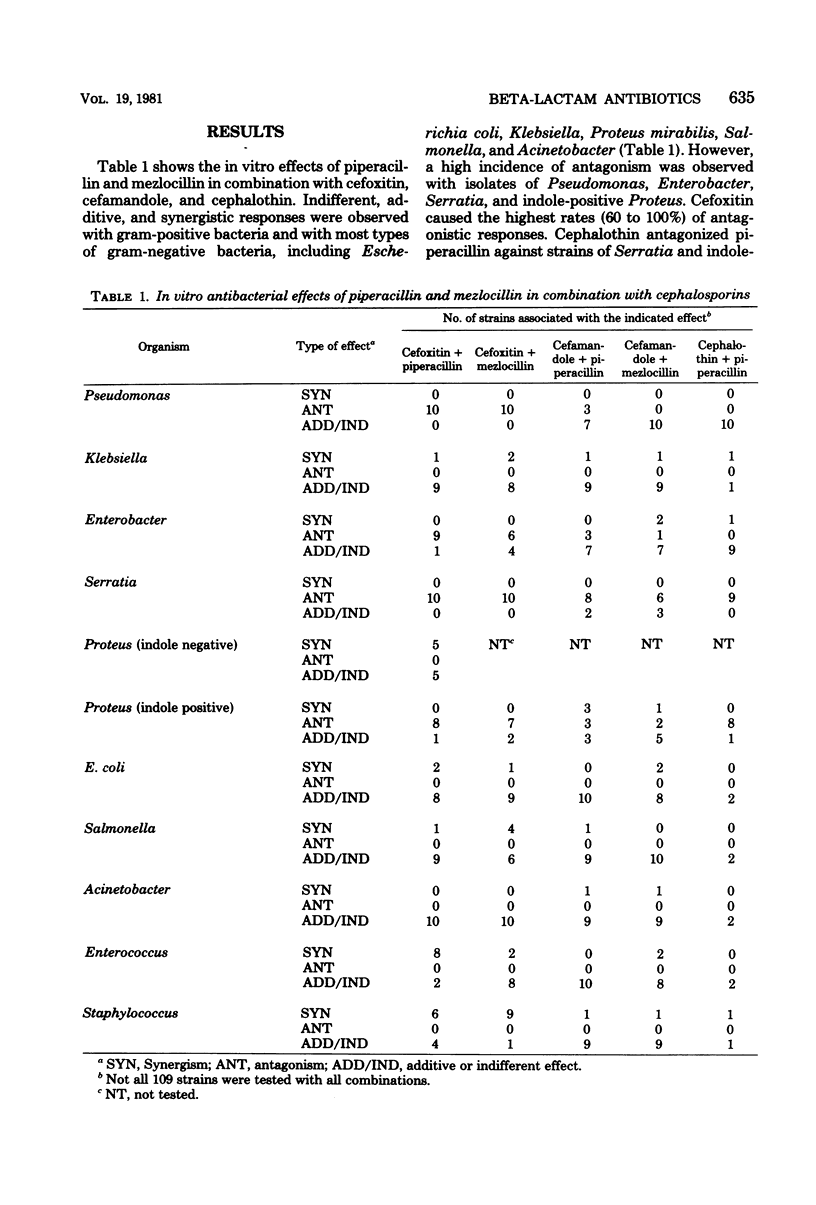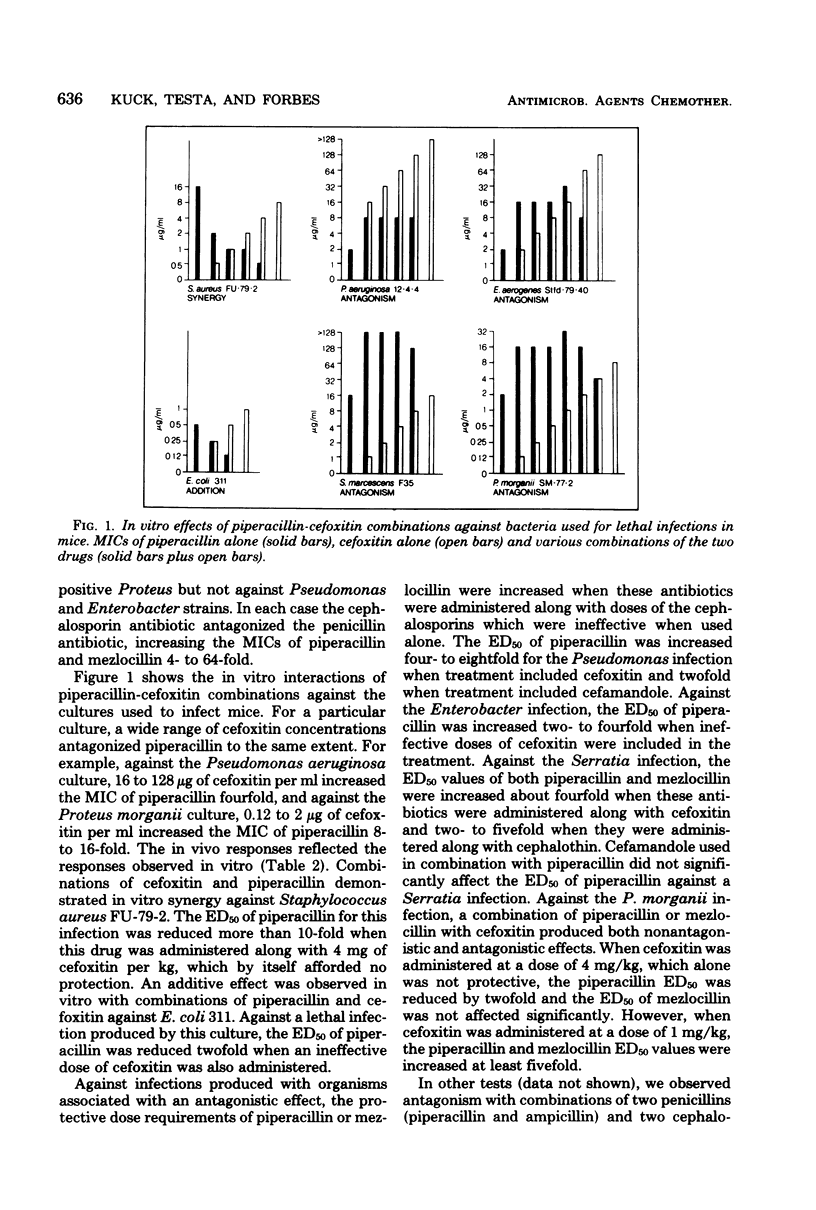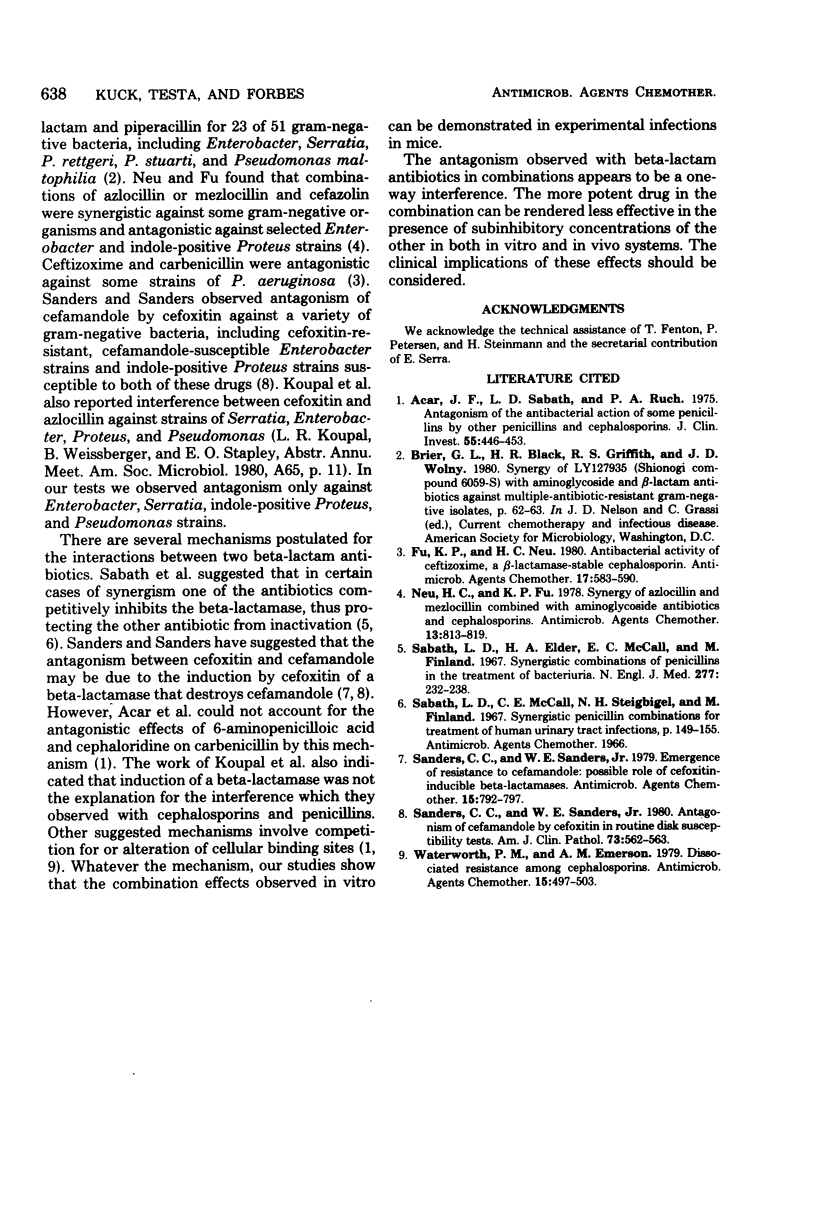Abstract
The effects of combining the new broad-spectrum penicillins piperacillin and mezlocillin with cefoxitin, cefamandole, or cephalothin on the antibacterial activities of these antibodies were determined in vitro against 50 to 109 bacterial strains and in six experimental infections in mice. Against strains of Escherichia coli, Klebsiella, Proteus mirabilis, Salmonella, Acinetobacter, Enterococcus, and Staphylococcus, the combinations exhibited synergistic, indifferent, or additive effects, but no antagonism. Against strains of four groups of organisms (Pseudomonas, Serratia, Enterobacter, and indole-positive Proteus), a high incidence of antagonism was observed, particularly with combinations containing cefoxitin (60 to 100%). The penicillins were antagonized by the cephalosporin antibiotics. In vitro effects were reflected in vivo. Mice infected with cultures associated with synergistic or additive in vitro effects were protected with lower doses of piperacillin when this antibiotic was administered with ineffective doses of cefoxitin than when piperacillin was used alone. Infections with cultures associated with in vitro antagonism required two- to eightfold higher doses of piperacillin and mezlocillin when these antibiotics were used in combination with the cephalosporins. The clinical implications of these effects should be considered.
Full text
PDF




Selected References
These references are in PubMed. This may not be the complete list of references from this article.
- Acar J. F., Sabath L. D., Ruch P. A. Antagonism of the antibacterial action of some penicillins by other penicillins and cephalosporins. J Clin Invest. 1975 Mar;55(3):446–453. doi: 10.1172/JCI107950. [DOI] [PMC free article] [PubMed] [Google Scholar]
- Fu K. P., Neu H. C. Antibacterial activity of ceftizoxime, a beta-lactamase-stable cephalosporin. Antimicrob Agents Chemother. 1980 Apr;17(4):583–590. doi: 10.1128/aac.17.4.583. [DOI] [PMC free article] [PubMed] [Google Scholar]
- McCall C. E., Steigbigel N. H., Finland M. Lincomycin: activity in vitro and absorption and excretion in normal young men. Am J Med Sci. 1967 Aug;254(2):144–155. [PubMed] [Google Scholar]
- Neu H. C., Fu K. P. Synergy of azlocillin and mezlocillin combined with aminoglycoside antibiotics and cephalosporins. Antimicrob Agents Chemother. 1978 May;13(5):813–819. doi: 10.1128/aac.13.5.813. [DOI] [PMC free article] [PubMed] [Google Scholar]
- Sabath L. D., Elder H. A., McCall C. E., Finland M. Synergistic combinations of penicillins in the treatment of bacteriuria. N Engl J Med. 1967 Aug 3;277(5):232–238. doi: 10.1056/NEJM196708032770503. [DOI] [PubMed] [Google Scholar]
- Sanders C. C., Sanders W. E., Jr Antagonism of cefamandole by cefoxitin in routine disk susceptibility tests. Am J Clin Pathol. 1980 Apr;73(4):562–563. doi: 10.1093/ajcp/73.4.562. [DOI] [PubMed] [Google Scholar]
- Sanders C. C., Sanders W. E., Jr Emergence of resistance to cefamandole: possible role of cefoxitin-inducible beta-lactamases. Antimicrob Agents Chemother. 1979 Jun;15(6):792–797. doi: 10.1128/aac.15.6.792. [DOI] [PMC free article] [PubMed] [Google Scholar]
- Waterworth P. M., Emmerson A. M. Dissociated resistance among cephalosporins. Antimicrob Agents Chemother. 1979 Apr;15(4):497–503. doi: 10.1128/aac.15.4.497. [DOI] [PMC free article] [PubMed] [Google Scholar]


